The large jazz ensemble is a special passion, one that has long outlived the mass popularity and economic rewards enjoyed by the big bands of the swing era. It speaks of an individual composer’s need for a larger canvas for his vision, but it also speaks of community and the special pleasure of playing in a section, many musicians regularly participating in rehearsal bands without enjoying the soloist’s spotlight or significant financial rewards. The now-formalized contrast of a single improviser playing against a harmonized section recalls the essential tensions that arose when early jazz musicians were first integrated into more formal bands. While composers pursued a synthesis of jazz and even classical elements, linking the formal and the vernacular, some soloists discovered the special freedom of improvising against an excess of form.
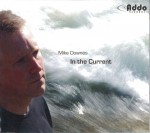 Mike Downes has repeatedly demonstrated the harmonic shading and surprising voicings he can draw from a trio or quintet, so there’s little surprise that he can do much more when he has greater resources. On In the Current (Addo AJR 019 addorecords.com), the bassist/composer leads an 11-piece band that can recall the orchestrations of other Canadian jazz composers like Phil Nimmons and Gordon Delamont. It’s a band constructed for voicings: the three woodwind players play a total of 13 different instruments while the four brass players deploy registers from trumpet to tuba with trombone and assorted horns (even a descant horn) in between. That spread of voices also suggests the Miles Davis Nonet and its alumni projects, like the Gerry Mulligan Concert Jazz Band and the Gil Evans Orchestra. While Evans (a Canadian composer who left in infancy) enjoyed the anagram Svengali, Downes pays special tribute, managing an anagram for Evan’s birth name, turning Ian Ernest Gilmore Green into Re-emerging Linear Tones, the middle movement of his title suite. Balancing Downes’ subtle abstraction, tenor saxophonist Kelly Jefferson brings a contrarian fire to his solo spots. Concert note: Mike Downes launches In the Current at Gallery 345 on February 8.
Mike Downes has repeatedly demonstrated the harmonic shading and surprising voicings he can draw from a trio or quintet, so there’s little surprise that he can do much more when he has greater resources. On In the Current (Addo AJR 019 addorecords.com), the bassist/composer leads an 11-piece band that can recall the orchestrations of other Canadian jazz composers like Phil Nimmons and Gordon Delamont. It’s a band constructed for voicings: the three woodwind players play a total of 13 different instruments while the four brass players deploy registers from trumpet to tuba with trombone and assorted horns (even a descant horn) in between. That spread of voices also suggests the Miles Davis Nonet and its alumni projects, like the Gerry Mulligan Concert Jazz Band and the Gil Evans Orchestra. While Evans (a Canadian composer who left in infancy) enjoyed the anagram Svengali, Downes pays special tribute, managing an anagram for Evan’s birth name, turning Ian Ernest Gilmore Green into Re-emerging Linear Tones, the middle movement of his title suite. Balancing Downes’ subtle abstraction, tenor saxophonist Kelly Jefferson brings a contrarian fire to his solo spots. Concert note: Mike Downes launches In the Current at Gallery 345 on February 8.
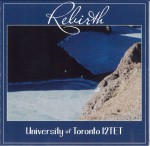 Many of the same sources might be cited as inspirations for the University of Toronto 12TET, the student ensemble heard on Rebirth (uoftjazz.ca). Directed by Terry Promane, the band plays a repertoire that mixes works by very advanced students as well as well-known professionals like Promane and New York tenor saxophonist Donny McCaslin, who provides the insistently swinging Claire. Perhaps the most striking work here is pianist Noam Lemish’s Rebirth, a work of continuous development that serves as the springboard for a chain of quietly impassioned solos that include trumpeter Tara Kannangara, alto saxophonist Matt Woroshyl, tenor saxophonist Landen Viera (the band’s stand-out soloist) and Lemish himself. Along the way there’s a stunning passage of cascading collective improvisation that’s as admirable for its restraint as for its sense of liberation.
Many of the same sources might be cited as inspirations for the University of Toronto 12TET, the student ensemble heard on Rebirth (uoftjazz.ca). Directed by Terry Promane, the band plays a repertoire that mixes works by very advanced students as well as well-known professionals like Promane and New York tenor saxophonist Donny McCaslin, who provides the insistently swinging Claire. Perhaps the most striking work here is pianist Noam Lemish’s Rebirth, a work of continuous development that serves as the springboard for a chain of quietly impassioned solos that include trumpeter Tara Kannangara, alto saxophonist Matt Woroshyl, tenor saxophonist Landen Viera (the band’s stand-out soloist) and Lemish himself. Along the way there’s a stunning passage of cascading collective improvisation that’s as admirable for its restraint as for its sense of liberation.
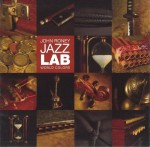 Montreal’s collective Jazzlab Orchestra was founded in 2003 as a venue to explore the expanded orchestral colours available with just a few more horns. The group celebrated its tenth anniversary with pianist John Roney’s project World Colors (Effendi FND129 effendirecords.com), the commemoration of his own world travels. Roney makes the most of the resources available, from his comic invocation of Saskatchewan in The Range to the suggestions of mystery and majesty in Agadir, his invocation of the Middle East. While his compositions can be as simple and unaffected as the arpeggios of the opening Over Yonder, Roney brings great emotional resource to Anatevka, inspired by the persecution of Ashkenazy Jews. Throughout, the Jazzlab Orchestra mirrors and expands Roney’s visions, with powerful solos from trumpeter Eric Hove and saxophonist Samuel Blais among others.
Montreal’s collective Jazzlab Orchestra was founded in 2003 as a venue to explore the expanded orchestral colours available with just a few more horns. The group celebrated its tenth anniversary with pianist John Roney’s project World Colors (Effendi FND129 effendirecords.com), the commemoration of his own world travels. Roney makes the most of the resources available, from his comic invocation of Saskatchewan in The Range to the suggestions of mystery and majesty in Agadir, his invocation of the Middle East. While his compositions can be as simple and unaffected as the arpeggios of the opening Over Yonder, Roney brings great emotional resource to Anatevka, inspired by the persecution of Ashkenazy Jews. Throughout, the Jazzlab Orchestra mirrors and expands Roney’s visions, with powerful solos from trumpeter Eric Hove and saxophonist Samuel Blais among others.
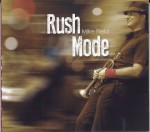 While his group rarely reaches beyond a quintet, Mike Field is another musician who colours his mainstream modern approach with touches from other music. On Rush Mode (MFJCD 1301 mikefieldjazz.com), the Toronto-based trumpeter leads a quintet that’s set squarely in the hard-bop mode, but with a lyrical emphasis that comes consistently to the fore. Field shares the front-line with tenor saxophonist Paul Metcalfe, and there’s clearly a special musical kinship, whether it’s in the punchy, unison theme statements (à la the Jazz Messengers) or the ease with which they complement one another’s lines, Metcalfe’s soulful bluster a foil to Field’s coiling, clarion cool (heard to best effect on the aptly titled Intersection). They receive resilient support from pianist Teri Parker, bassist Carlie Howell and drummer Dave Chan. There are also effective guest spots from the veteran pianist Mark Eisenman, whose hard bop credentials are evident in Red Eye Blues, and acoustic guitarist Kevin Laliberte, who bring a certain sense of flamenco drama to the title track. Sophia Perlman graces The Last of the Summer Days with a vocal that suggests a spotlight through smoke and fog.
While his group rarely reaches beyond a quintet, Mike Field is another musician who colours his mainstream modern approach with touches from other music. On Rush Mode (MFJCD 1301 mikefieldjazz.com), the Toronto-based trumpeter leads a quintet that’s set squarely in the hard-bop mode, but with a lyrical emphasis that comes consistently to the fore. Field shares the front-line with tenor saxophonist Paul Metcalfe, and there’s clearly a special musical kinship, whether it’s in the punchy, unison theme statements (à la the Jazz Messengers) or the ease with which they complement one another’s lines, Metcalfe’s soulful bluster a foil to Field’s coiling, clarion cool (heard to best effect on the aptly titled Intersection). They receive resilient support from pianist Teri Parker, bassist Carlie Howell and drummer Dave Chan. There are also effective guest spots from the veteran pianist Mark Eisenman, whose hard bop credentials are evident in Red Eye Blues, and acoustic guitarist Kevin Laliberte, who bring a certain sense of flamenco drama to the title track. Sophia Perlman graces The Last of the Summer Days with a vocal that suggests a spotlight through smoke and fog.
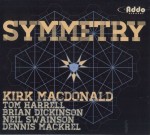 The veteran Toronto saxophonist Kirk MacDonald leads a quintet without any special trimmings on Symmetry (Addo AJR018 addorecords.com), exploring sometimes dense chordal extensions and scalar overlays (his solo on Mackrel’s Groove aspires to Coltrane-level convolution) on a series of his compositions that otherwise move effortlessly on tranquil modal harmonies and a rhythm section that seems to dance and float at once, anchored by the resonant tone and optimum note selection of bassist Neil Swainson, the gently propulsive drumming of Dennis Mackrel and the limpid, airy chording of pianist Brian Dickinson. Adding special dimension to the music is Tom Harrell, whose trumpet and flugelhorn playing is consistently inspired and inspiring, nowhere more so than on the silky ballad Eleven.
The veteran Toronto saxophonist Kirk MacDonald leads a quintet without any special trimmings on Symmetry (Addo AJR018 addorecords.com), exploring sometimes dense chordal extensions and scalar overlays (his solo on Mackrel’s Groove aspires to Coltrane-level convolution) on a series of his compositions that otherwise move effortlessly on tranquil modal harmonies and a rhythm section that seems to dance and float at once, anchored by the resonant tone and optimum note selection of bassist Neil Swainson, the gently propulsive drumming of Dennis Mackrel and the limpid, airy chording of pianist Brian Dickinson. Adding special dimension to the music is Tom Harrell, whose trumpet and flugelhorn playing is consistently inspired and inspiring, nowhere more so than on the silky ballad Eleven.



